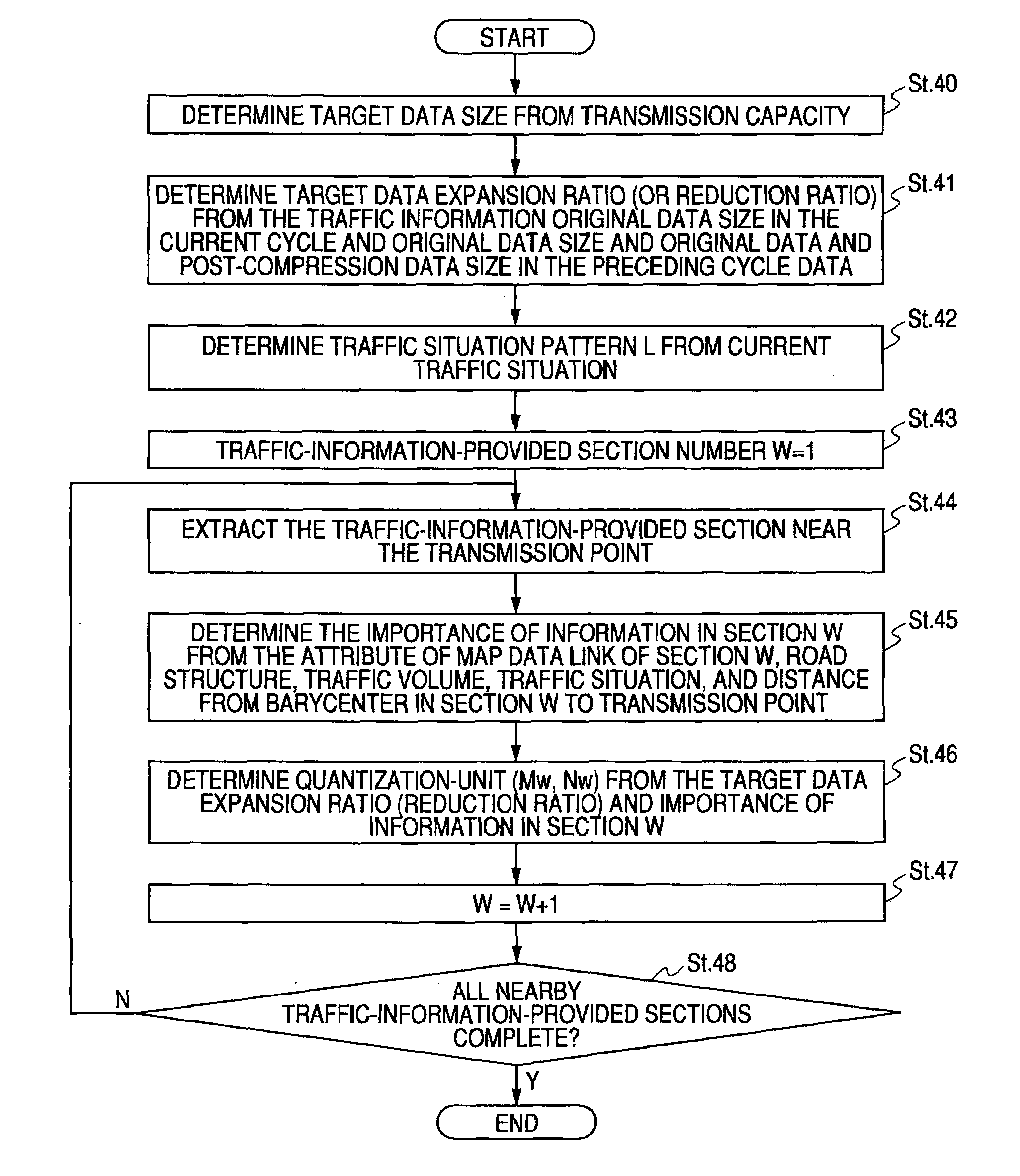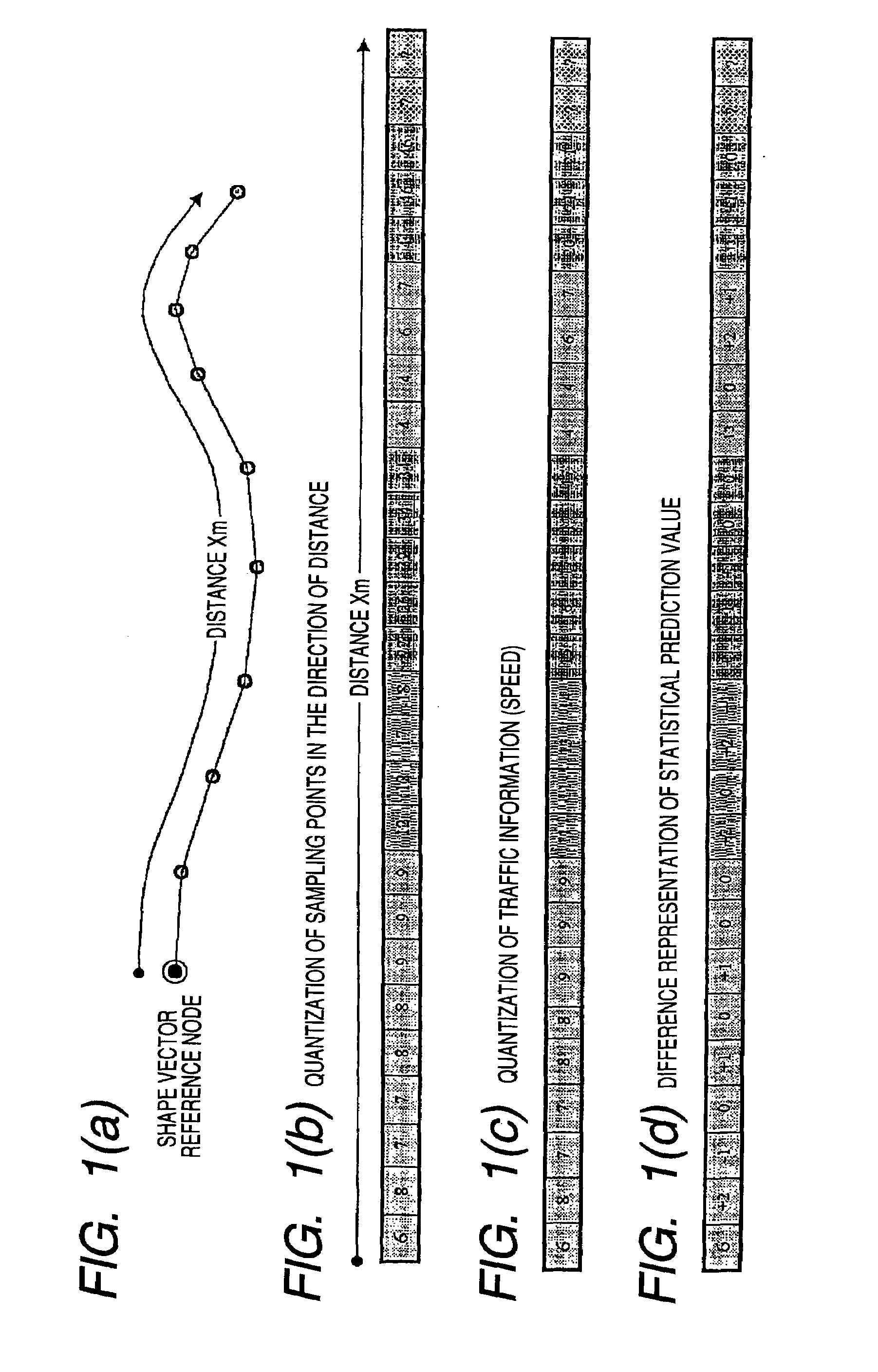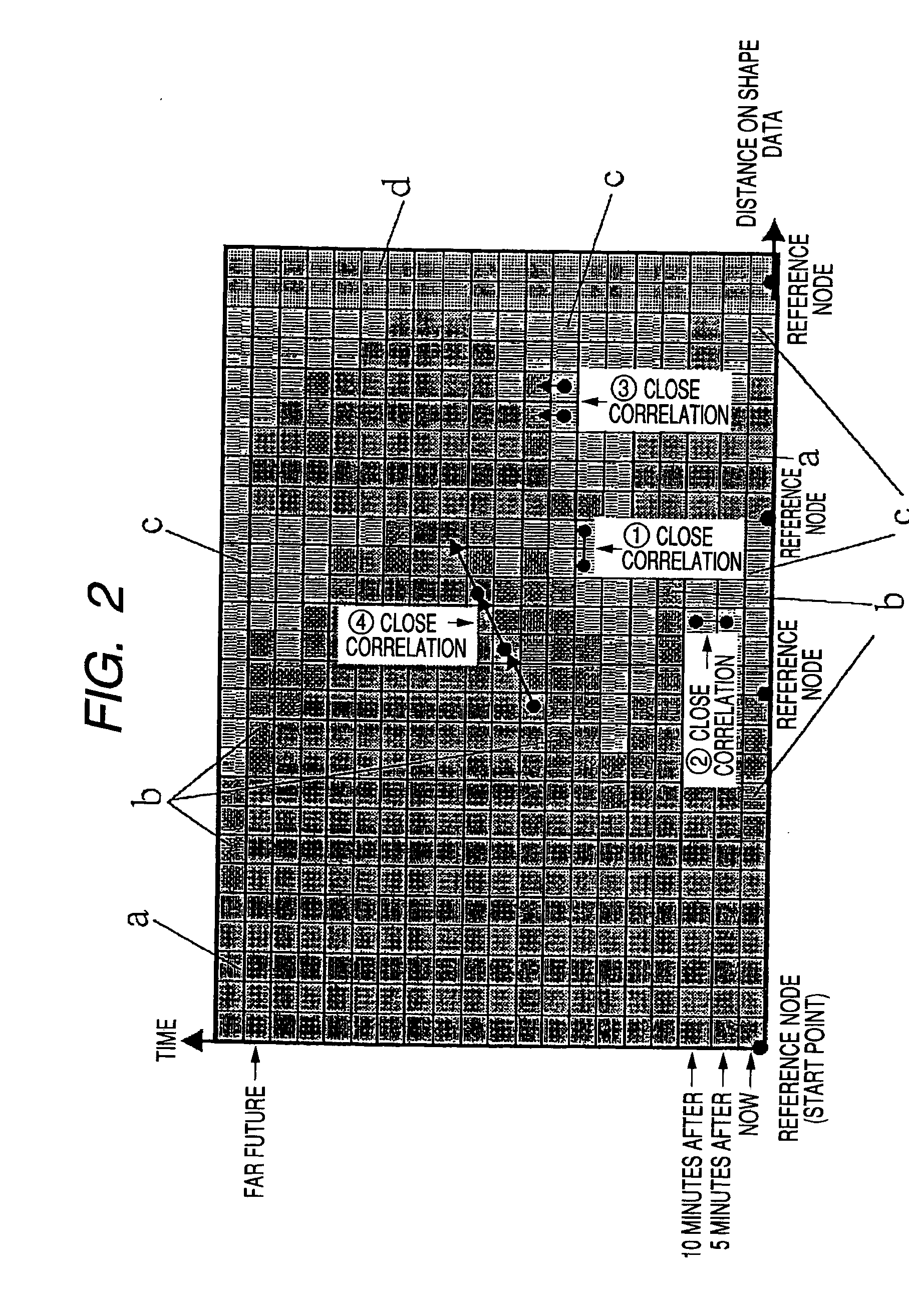Road information provision system, road information provision apparatus, and road information generation method
a technology of information provisioning and information generation, which is applied in the direction of vehicle position indication, navigation instruments, instruments, etc., can solve the problems of inability to support a variety of requests, huge social costs, and cumulative errors
- Summary
- Abstract
- Description
- Claims
- Application Information
AI Technical Summary
Benefits of technology
Problems solved by technology
Method used
Image
Examples
first embodiment
Traffic Information Generation Method
[0185]A first embodiment of the invention pertains to a case where a state quantity of traffic information (congestion information and travel time information) at each sampling point is quantized and variable length encoded to generate traffic information.
[0186]Referring to FIG. 2, a schematic view of a graph showing the traffic information (congestion information and travel time information), with the horizontal axis representing a distance on the shape data and the vertical axis a time axis. One square of the horizontal axis represents the unit block length of a quantization-unit (quantization-unit in the direction of distance) set by way of sampling while one square of the vertical axis a constant time interval. In each square of this graph is recorded travel speed information corresponding to the distance from the reference node (start point) and the time elapsed from the current time. A reference node for correction of relative position is s...
second embodiment
Difference Representation of Prediction Information
[0266]A second embodiment of the invention pertains to generation of prediction information of traffic information. To represent prediction information by difference, two methods are available as schematically shown in FIG. 15.
[0267]The first method is a method whereby the difference in the direction of distance in the traffic information of the time zone N+1 (a) is calculated (d) and the information on this difference (change point) is encoded. This approach is the same as the encoding of current information described in the second embodiment.
[0268]The second method is a method whereby the difference between the traffic information of the time zone N+1 (a) and the traffic information of the preceding time zone N (b) is extracted (c), and the difference in the direction of distance is calculated based on the extracted difference for later encoding (e).
[0269]Which of the first and second methods is more advantageous in terms of reduc...
third embodiment
[0299]A third embodiment of the invention pertains to a method for performing orthogonal transformation on the traffic information represented by a function of distance from the reference node to decompose the information into frequency components and representing the traffic information by the coefficient of each frequency component.
[0300]Approaches to perform orthogonal transformation on chronological data and convert the data to a coefficient of frequency component include FFT (fast Fourier Transform, DCT (discrete cosine transform), and wavelet transform. The FFT (fast Fourier Transform) which is the most popular is described below.
[0301]The Fourier Transform is a transform process which uses a finite number of discrete values (sample values) to obtain a Fourier coefficient. The Fourier Transform refers to a process where a complex function C is associated with a discrete value represented by a complex function f:
C(k)=(1 / n)Σf(j)·ω−jk (k=0, 1, 2, . . . , n−1) (For Σ, add from j=0...
PUM
 Login to View More
Login to View More Abstract
Description
Claims
Application Information
 Login to View More
Login to View More - R&D
- Intellectual Property
- Life Sciences
- Materials
- Tech Scout
- Unparalleled Data Quality
- Higher Quality Content
- 60% Fewer Hallucinations
Browse by: Latest US Patents, China's latest patents, Technical Efficacy Thesaurus, Application Domain, Technology Topic, Popular Technical Reports.
© 2025 PatSnap. All rights reserved.Legal|Privacy policy|Modern Slavery Act Transparency Statement|Sitemap|About US| Contact US: help@patsnap.com



